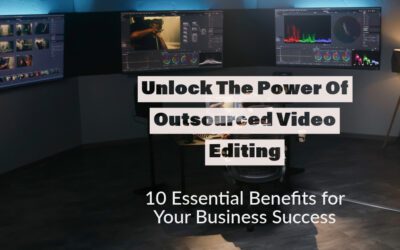Diversity and Inclusion are no longer just nice things in company culture. Instead, there is a growing expectation that the workplace should explicitly be supportive. And it should be reflected in any videos on diversity shown in the workplace.
The past few years’ events have helped accelerate employee engagement in these types of discussions. And true leaders are seizing the moment to advance diversity, Equity, and Inclusion in their organizations.
Therefore, there is no better time to create videos to celebrate successes and map the next steps.
DO THE WORK BEFORE YOU DO THE VIDEO.
However, if your organization still needs to do the work to establish the appropriate policies, creating a video should be at the bottom of your list.
Creating a good policy and supportive atmosphere requires a willingness to ask difficult questions about diversity and Inclusion. In addition, it would help if you addressed gaps and mistakes in your current policies. You will understand the experiences your employees have, and make clear plans to move forward—all within the context of different perceptions and needs.
Any video long on platitudes and filled with images from stock footage that does not reflect your workplace will be seen as out of touch with reality. If anything, a video focusing on diversity, Equity, and Inclusion must start with individuals directly embedded in company culture.
Creating corporate videos to feature inclusive culture can backfire. Anything that does not pass the test of authenticity will be seen as corporate propaganda or, worse, disastrous in terms of legitimacy.
IS VIDEOS ON DIVERSITY GOOD FOR BUSINESS?
This is not an article on how to create and implement a diversity, equity, and inclusiveness policy, but you must recognize that it is not just the right thing to do; it is also an excellent step for your business.
A McKinsey & Company 2020 Report of 15 countries and more than 1,000 large companies reaffirmed a strong business case for gender diversity and ethnic and cultural diversity in corporate leadership—and it continues to strengthen.
The most diverse companies are now more likely than ever to outperform in terms of profitability than less diverse ones.
Companies with women representing 30 percent of their executives are more likely to outperform companies with fewer women in executive suites by significant amounts. Up to 48 percent more, compared to the least gender-diverse companies.
Business-case findings are equally compelling in terms of ethnic and cultural diversity. In 2019, top-quartile companies outperformed those in the fourth quartile by as much as 36 percent in profitability.
WHERE TO START VIDEOS ON DIVERSITY?
It is essential to have a diverse video production team. You will avoid pitfalls like racist content or harmful stereotypes in your video.
Then members of this team will help you root out the worst of the worst. Things that may escape many people because they are not exposed to the issue.
It is important not to assume that any video team member has all the answers on specific issues; instead, they can provide insight into various topics that others may not see.
THE FIRST STEP IS OUTLINING OBJECTIVES.
For example, what is the purpose? Address the fundamental challenges in Diversity or Inclusion. What are the goals of the organization?
How will the video be rolled out? Will it be a stand-alone piece or delivered as part of a campaign?
Who will be your audience? Is it the rank and file, new employees, middle management, or human resources, to name a few?
In every instance, do your homework, gather data, and clearly outline the objectives of the video. Ensure it is a reality-based video that will connect with your audience.
Diversity teams are great at gathering data, but video producers are great with employee interviews if there is no team. Once the video’s objective is defined, and relevant content is identified, you are ready to produce the video.
The best way to approach the video is to be factually oriented with a focus on specific content and issues. Stay away from identifying any particular group. If you are to focus on a specific employee, highlight this person’s accomplishments qualitatively, and link the employee’s performance to overall corporate goals and initiatives.
VIDEOS ON DIVERSITY AND INCLUSION SHOULD DEPICT A GENUINE INTEREST IN BRIDGING ANY DIVERSITY DIVIDE.
Videos are a great way of evoking emotion. They quickly establish an emotional link to the desire to overcome diversity and inclusion challenges in an organization. A simple interview with a significant actor within an organization will often go much further than a detailed policy statement if it conveys an emotional commitment to the issues.
Nevertheless, it is essential to be transparent about these challenges. Highlight different situations or specific challenges that any group might face. It is also an excellent way to educate employees about high-profile topics (like race and gender) and issues with lower visibility, such as disability or religion.
Within the context of the video, it is crucial to define your terms clearly. For example, diversity, Equity, and Inclusion may be interpreted in a multidimensional way.
To some people, “diversity” is perceived as “more women” or “more African-Americans.” Unfortunately, poorly designed videos reinforce this paradigm by devoting most of their content to a single diversity issue.
Amazing videos introduce various scenarios where a variety of diversity-related conflicts or misunderstandings can be discussed in a safe environment.
ABOUT COMPANY CULTURE
Company culture should be one of the places to focus a video because of its impact.
Besides the fact that diversity improves your current business, 67 percent of workers consider diversity when seeking employment. According to a Glassdoor survey, 72 percent of women, 89 percent of black respondents, 80 percent of Asians, and 70 percent of Latinos said workforce diversity was essential to them. A significant majority of white respondents also said workforce diversity is important.
In Microsoft Advertising’s research for The Psychology of Inclusion and the Effects in Advertising, almost two-thirds (64%) of people said they are more trusting of brands that represent diversity in their ads. About the same number (63%) said brands that represent diversity in ads are more authentic.
WHAT TYPE OF TOPICS WORKS WELL?
First, a video highlighting Diversity, Equity, and Inclusiveness does not have to be directly focused on the topic. Instead, this can very much be the atmosphere of the video. The choice of who speaks on issues represented in B-Roll or appears in any other video aspect can be part of a commitment to the problems.
Another approach, highlight the work of various organizations supported by the company related to Diversity, Equity, and Inclusiveness.
A good example could celebrate participation in organizations such as charitable or industry-specific bodies such as Women in Digital or Advancing Women in Leadership.
Other stories can be more personal profiles of individuals who may have been successful within the company.
Some videos can celebrate important dates such as Black History or Pride month, events, or employees participating in these organizations. Other ideas may be more explanatory and support the interests of religious employees.
TRAINING AND AWARENESS
One of the biggest challenges is that only some will have the same experience or perception. So this is a good place for training videos. It allows you to develop a common reference.
Here are a couple of interesting examples.
Assumptions and personal experiences
Unconscious Bias
HOW TO MAKE YOUR VIDEOS ON DIVERSITY MORE ACCESSIBLE
Language versions of videos are an essential aspect of inclusiveness. If videos are only subtitled in a second language, it may give the impression a particular group within your audience is not valued. It certainly takes more work, but using narration and some relevant interviews in the second language, along with onscreen text, is integral to creating inclusive content.
Final words
The discussion of Diversity, Equity, and Inclusiveness will only accelerate over the next few years.
Therefore, there is no better time to create videos to celebrate successes and map the next steps forward.
____________
Resources
Photos:
Storyblocks
South Indian Woman by Raksh1tha is licensed under CC BY 2.0





